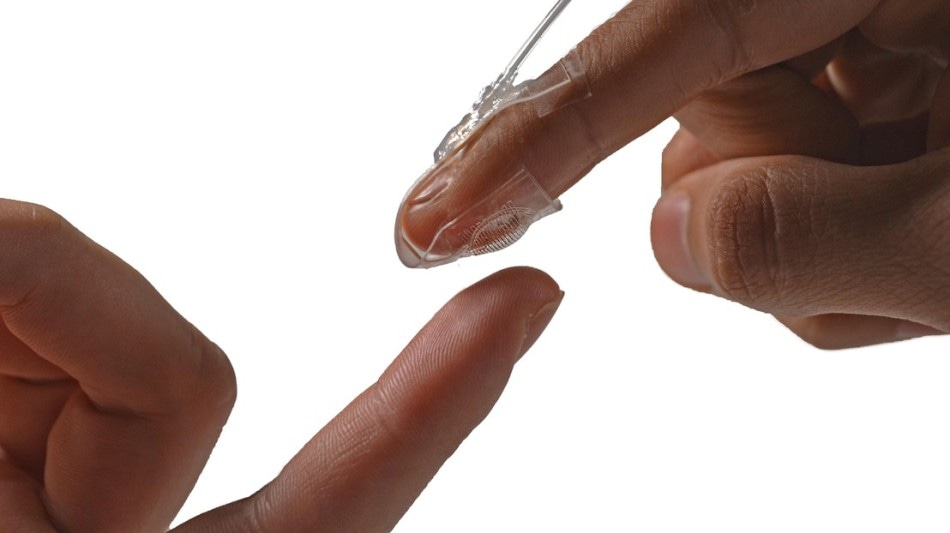Oct 1 2019
Similar to one’s senses of vision and hearing, the sense of touch has a crucial role to play in how people perceive and interact with the surrounding environment.
 Artificial skin adapts to any morphology (Image credit: © 2019 EPFL)
Artificial skin adapts to any morphology (Image credit: © 2019 EPFL)
Technology that can replicate the sense of touch—also called haptic feedback—can significantly improve human-robot and human-computer interfaces for applications like virtual reality and medical rehabilitation.
Researchers at EPFL’s Reconfigurable Robotics Lab (RRL), headed by Jamie Paik, and Laboratory for Soft Bioelectronic Interfaces (LSBI), headed by Stéphanie Lacour at the School of Engineering, have partnered up to create a soft, flexible artificial skin composed of electrodes and silicone. The two labs are a part of the NCCR Robotics program.
The skin’s system of soft sensors and actuators allow the artificial skin to adapt to the precise shape of a wearer’s wrist, for instance, and offer haptic feedback in the form of vibration and pressure.
Strain sensors constantly measure the skin’s deformation so that the haptic feedback can be attuned in real time to create a sense of touch that is as lifelike as possible. The researchers’ work has just been detailed in Soft Robotics.
This is the first time we have developed an entirely soft artificial skin where both sensors and actuators are integrated. This gives us closed-loop control, which means we can accurately and reliably modulate the vibratory stimulation felt by the user. This is ideal for wearable applications, such as for testing a patient’s proprioception in medical applications.
Harshal Sonar, Study Lead Author, EPFL
Haptics Sandwiched Between Silicone Layers
The artificial skin has soft pneumatic actuators that form a membrane layer which can be inflated by forcing air into it. The actuators can be tweaked to different pressures and frequencies (up to 100 Hz, or 100 impulses per second). The skin vibrates when the membrane layer is inflated and deflated quickly.
A sensor layer is positioned on top of the membrane layer and comprises soft electrodes composed of a liquid-solid gallium mixture. These electrodes continuously measure the skin’s deformation and transmit the data to a microcontroller. The microcontroller uses this feedback to tweak the sensation transmitted to the wearer in reaction to the wearer’s movements and variations in external factors.
The artificial skin can be expanded up to four times its actual length for up to a million cycles. That makes it especially attractive for several real-world applications. At present, the researchers have tested it on users’ fingers and are still optimizing the technology.
The next step will be to develop a fully wearable prototype for applications in rehabilitation and virtual and augmented reality. The prototype will also be tested in neuroscientific studies, where it can be used to stimulate the human body while researchers study dynamic brain activity in magnetic resonance experiments.
Harshal Sonar, Study Lead Author, EPFL
Artificial skin could help rehabilitation and enhance virtual reality
(Video credit: EPFL)